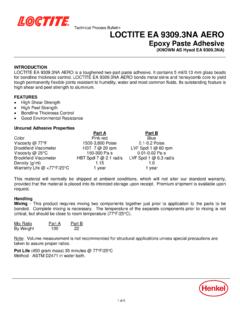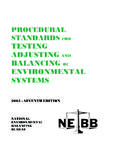Transcription of Reimbursement for Non-Invasive Respiratory Support in ...
1 2400 Beacon St., #203, Chestnut Hill, MA 02467 617-645-8452 Reimbursement for Non-Invasive Respiratory Support in Hospital Inpatient, Emergency Department and Other Outpatient Settings1 The purpose of this document is to provide Respiratory Therapy Departments with information on the relationship between Respiratory Department coding and billing and hospital Reimbursement for noninvasive mechanical ventilation and other Respiratory Support modalities delivered in the inpatient hospital and outpatient emergency department settings. I. Introduction There are several variables that a hospital considers in selecting a preferred therapeutic modality for patients who present in acute Respiratory distress or who require Respiratory Support in the inpatient setting (during post-operative recovery, intensive care, or on the general care floor), in the outpatient setting and in the emergency department. These variables include: Clinical efficacy the ability of the therapeutic modality to provide the required Support , reduce the needed duration of Support , improve outcomes and minimize adverse events; Patient compliance patient tolerance to the therapy and patient comfort.
2 Staff resource requirements the time and effort hospital staff members need to devote to the delivery of the required Support ; Compatibility with the broader patient care process the impact, if any, on the ability of other members of the patient care team (physicians, nurses, orderlies, etc.) to do their job efficiently and effectively; The institutional and departmental profit impact - Reimbursement from billing, minus the cost of providing the Respiratory Support modality. This document addresses this final variable: the impact of Respiratory Department billing and coding on hospital Reimbursement for the different Non-Invasive mechanical ventilation modalities in the inpatient hospital, emergency department and outpatient settings. 1 Vapotherm commissioned and paid for the creation of this White Paper. The views expressed in the paper are those of Larchmont Strategic Advisors and not of Vapotherm. II. Hospital Reimbursement for Non-Invasive Respiratory Support in the Inpatient Setting The selection of a Respiratory therapy modality has no impact on inpatient hospital revenue.
3 For Medicare, the largest insurer, and for most private insurers, payment to the hospital for inpatient care is based on the assignment of an episode of care to one or another diagnosis-related group (DRG)2, or similar case-rate category defined by diagnoses, patient characteristics and surgical procedures performed. The amount of payment to the hospital depends upon the DRG (or similar case category) assignment. Payment does not vary with the specific diagnostic tests, pharmaceuticals or other services provided during the inpatient stay. Respiratory therapy does not affect hospital revenue; the hospital is paid the same amount for the patient stay regardless of whether that patient received NIPPV, High Velocity Nasal Insufflation (HVNI), High Flow Nasal Cannula (HFNC), simple oxygenation therapy or no Respiratory Support . Hospitals use the ICD-10-PCS code set to report procedures performed in the inpatient setting. ICD-10-PCS procedure codes and ICD-10-CM diagnosis codes are used to determine the DRG assignment and consequent Reimbursement for an inpatient episode of The ICD-10- PCS codes specific to Respiratory therapy identify both the duration and modality of Respiratory therapy given.
4 Duration is coded into one of three categories: Less than 24 consecutive hours 24-96 consecutive hours Greater than 96 consecutive hours. For each of these duration categories, there are four (4) codes identifying specific therapy modalities and a fifth (5th) code for modalities not specifically identified: Continuous positive airway pressure Intermittent positive airway pressure Continuous negative airway pressure Intermittent negative airway pressure Unspecified Table I provides a complete list of the Respiratory therapy ICD-10-PCS codes. None of these codes is determinant of DRG assignment. Because they do not affect DRG assignment, they do not affect the amount of Reimbursement to the hospital. 2 See the appended Glossary for an explanation of this and other abbreviations or technical terms found in this White Paper. 3 An inpatient stay is reimbursed for one and only DRG the highest paying DRG for which the stay qualifies. Table I ICD-10 Procedure Codes for Respiratory Therapy Code Descriptions 5A09357 Assistance with Respiratory Ventilation, Less than 24 Consecutive Hours, Continuous Positive Airway pressure 5A09358 Assistance with Respiratory Ventilation, Less than 24 Consecutive Hours, Intermittent Positive Airway pressure 5A09359 Assistance with Respiratory Ventilation, Less than 24 Consecutive Hours, Continuous Negative Airway pressure 5A0935B Assistance with Respiratory Ventilation, Less than 24 Consecutive Hours, Intermittent Negative Airway pressure 5A0935Z Assistance with Respiratory Ventilation, Less than 24 Consecutive Hours 5A09457 Assistance with Respiratory Ventilation, 24-96 Consecutive Hours, Continuous Positive Airway pressure 5A09458 Assistance with Respiratory Ventilation, 24-96 Consecutive Hours, Intermittent Positive Airway pressure 5A09459 Assistance with Respiratory Ventilation, 24-96 Consecutive Hours.
5 Continuous Negative Airway pressure 5A0945B Assistance with Respiratory Ventilation, 24-96 Consecutive Hours, Intermittent Negative Airway pressure 5A0945Z Assistance with Respiratory Ventilation, 24-96 Consecutive Hours 5A09557 Assistance with Respiratory Ventilation, More than 96 Consecutive Hours, Continuous Positive Airway pressure 5A09558 Assistance with Respiratory Ventilation, More than 96 Consecutive Hours, Intermittent Positive Airway pressure 5A09559 Assistance with Respiratory Ventilation, More than Consecutive Hours, Continuous Negative Airway pressure 5A0955B Assistance with Respiratory Ventilation, More than 96 Consecutive Hours, Intermittent Negative Airway pressure 5A0955Z Assistance with Respiratory Ventilation, More than 96 Consecutive Hours III. Hospital Reimbursement for Non-Invasive Respiratory Support in the Hospital Outpatient Setting, Including the Emergency Department There is no Reimbursement advantage to the hospital for the use of any particular method of Non-Invasive mechanical Respiratory Support in the Emergency Department or other hospital outpatient setting.
6 For patients who present in the emergency department in Respiratory distress, or who suffer acute Respiratory distress while being treated in the ED or the outpatient department, Non-Invasive mechanical Respiratory Support may be initiated in the outpatient setting: If the patient is subsequently admitted to the hospital for treatment or monitoring, the entire episode of care, including the ED visit cost, is reimbursed as an inpatient episode; in that case, payment is made under the DRG system or case-rate contract and there is no incremental revenue to the hospital for any of the services provided in the ED, including the mechanical Respiratory Support . Some patients who require mechanical Respiratory Support in the ED, in the Observation Unit, or other outpatient setting may not be admitted to the hospital; for those patients, payment is made under the rules governing hospital outpatient services. Billing for ED and other hospital outpatient services. Hospitals bill for outpatient services using the CPT coding system the same system used by physicians and allied health professionals to bill for professional services.
7 Medicare assigns each CPT code to an Ambulatory Payment Classification (APC), and the hospital receives a set payment for each APC. A single episode of outpatient care may involve multiple services and payment for multiple APCs. When closely related services are provided together, Medicare invokes a multiple procedure reduction and pays only 50% of the normal APC payment amount for the second and subsequent procedures. In other cases, a service may be bundled within a code that identifies a broader service package, such as a Critical Care or Evaluation and Management (E&M) code and is not reimbursed separately in the presence of that broader code. The CPT code set is surprisingly thin in the Non-Invasive mechanical Respiratory Support area far less detailed than the parallel ICD-10-PCS codes. This is partly due to the fact that the CPT system is owned and operated by the American Medical Association and that the committee maintaining CPT is primarily focused on services that are directly provided by physicians, but it may also be due to the fact that there is little difference in professional time and expertise required for the various Respiratory Support modalities.
8 Table II provides the full list of CPT codes for mechanical Respiratory Support and the Medicare outpatient hospital payment amounts for those codes: Table II CPT Codes for Noninvasive Mechanical Respiratory Support * ED and Hospital Outpatient Payment Code Description APC $$** 94002 Ventilation assist and management, initiation of pressure or volume preset ventilators for assisted or controlled breathing; hospital inpatient/observation, initial day 5801 - Ventilation initiation and management $ 94003 Ventilation assist and management, initiation of pressure or volume preset ventilators for assisted or controlled breathing; hospital inpatient/observation, each subsequent day 5801 - Ventilation initiation and management $ 94660 Continuous positive airway pressure ventilation (CPAP), initiation and management* 5791 Pulmonary treatment $ 94662 Continuous negative pressure ventilation initiation and management 5801 - Ventilation initiation and management $ 94799 Unlisted Pulmonary Service or Procedure** 5721 Level 1 diagnostic tests and related procedures $ *There is no CPT code for basic oxygen, which is an unbilled component of any inpatient or outpatient service * *Medicare Base National Payment Amount; actual payment varies to reflect geographic area cost differences **This code may be used if a pulmonary service is not identifiable by some more specific code The circumstances under which the hospital will be paid the amounts shown in Table II are limited by two important payment system features: 1.
9 As referenced above, services provided in the ED or outpatient department to patients who are admitted to inpatient status are considered part of the inpatient episode of care for payment purposes; and 2. Respiratory Support services are typically bundled into outpatient Observation Status codes, but may under limited circumstances be separately reimbursed; and 3. Respiratory Support codes as not billable by the hospital in conjunction with any E&M code. Medicare s Correct Coding Initiative (CCI) dictates that if Respiratory Support is initiated and managed in conjunction with a critical care evaluation and ill or critically injured patient; first 30-74 minutes is assigned to APC 5041 which pays $734. IV. Provider ( Physician, Nurse Practitioner, Physician Assistant) Reimbursement for Non-Invasive Respiratory Support in the inpatient, emergency department and outpatient settings. Provider Reimbursement is the same regardless of the particular mechanical ventilation modality one chooses.
10 Providers are reimbursed separately from the hospital. In both the inpatient or outpatient setting, providers bill using CPT codes defined in section III above. Table III below shows the Medicare payment amounts to service providers for the same ventilation initiation and management codes addressed in Table II. It is important to understand, however, that professional billing is subject to the same CCI exclusion as is hospital billing: Respiratory Support codes are not payable to providers or to hospitals in conjunction with E&M codes. In each case, the E&M code has a higher amount and incorporates the Respiratory Support . Table III CPT Codes for Noninvasive Mechanical Respiratory Support Provider Payment Code Description Medicare $$* 94002 Ventilation assist and management, initiation of pressure or volume preset ventilators for assisted or controlled breathing; hospital inpatient/observation, initial day $ 94003 Ventilation assist and management, initiation of pressure or volume preset ventilators for assisted or controlled breathing.



